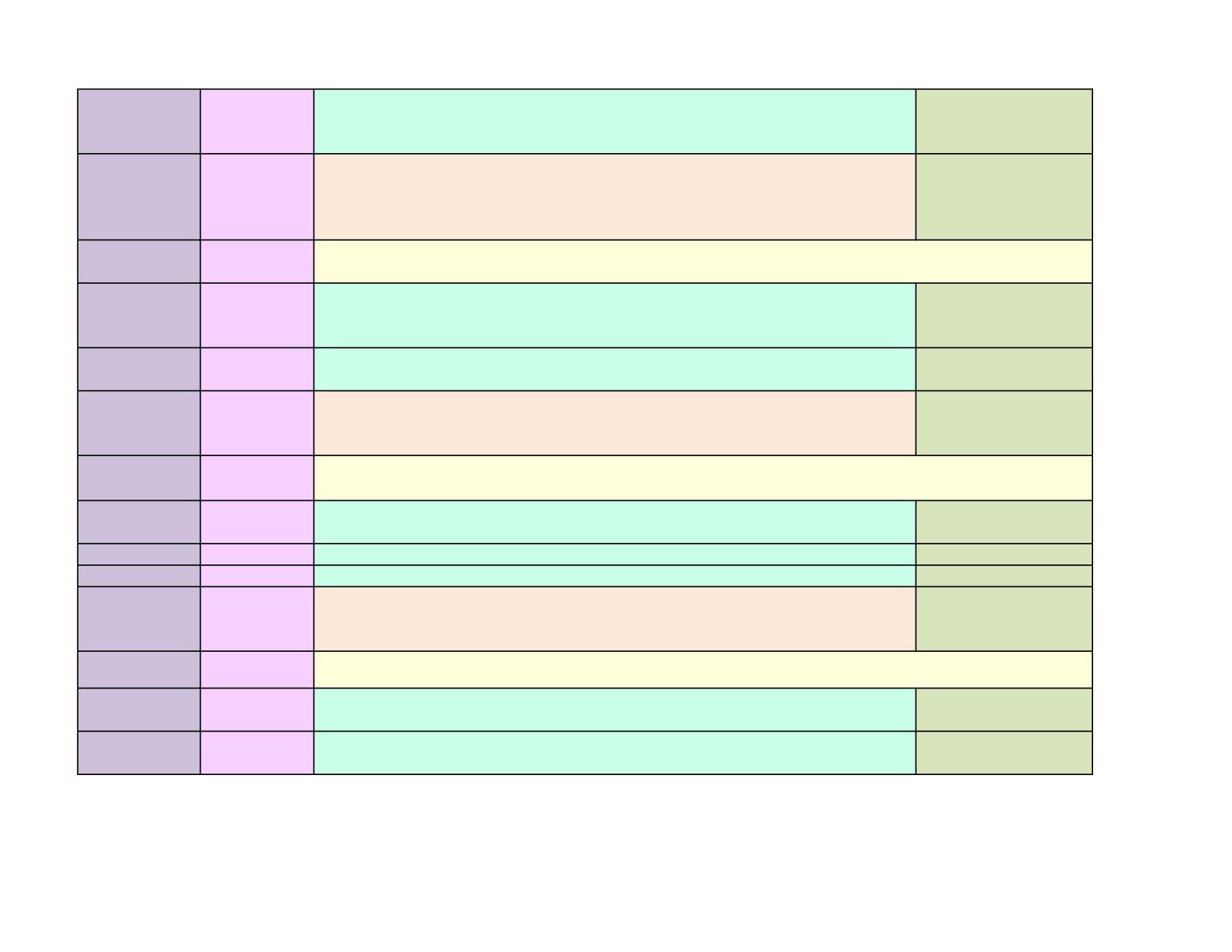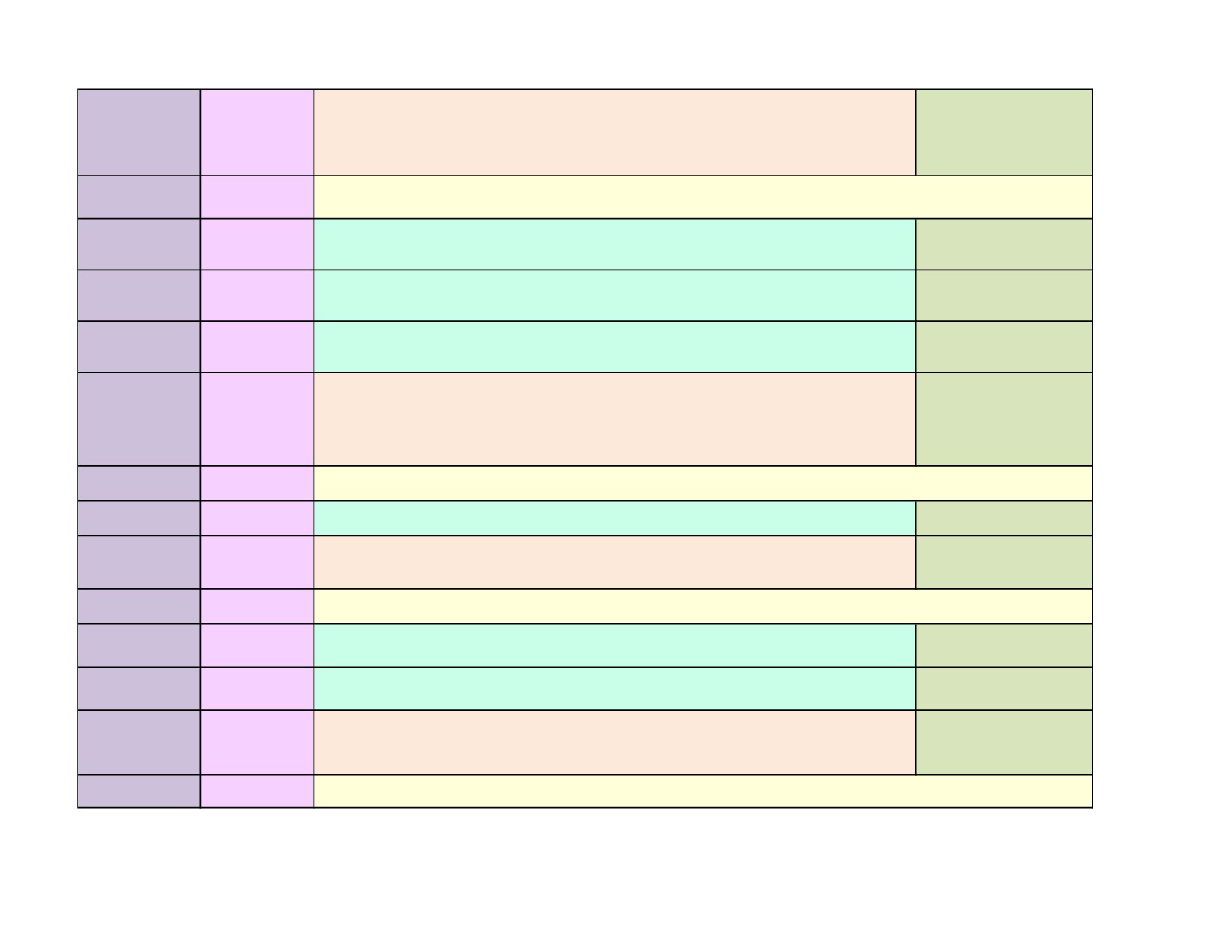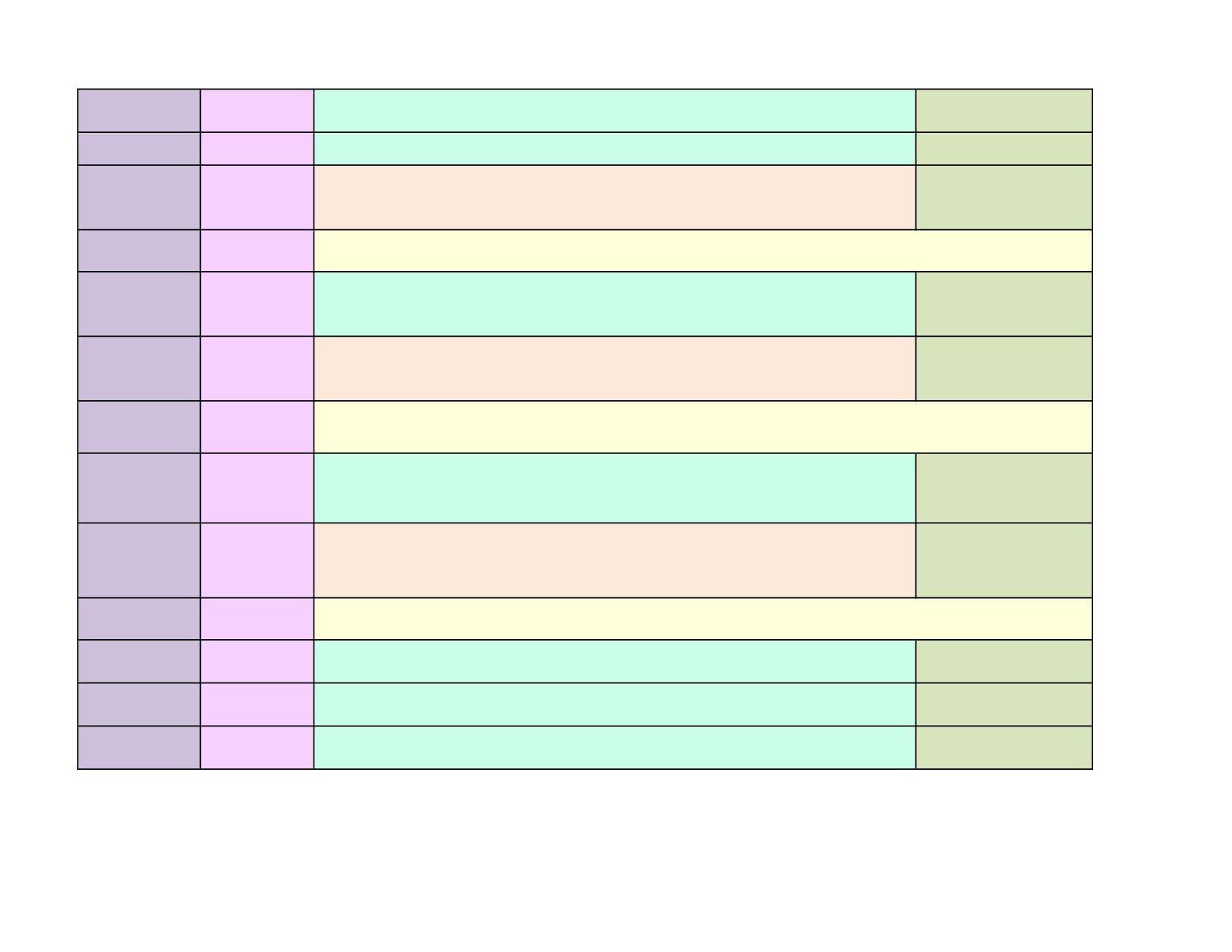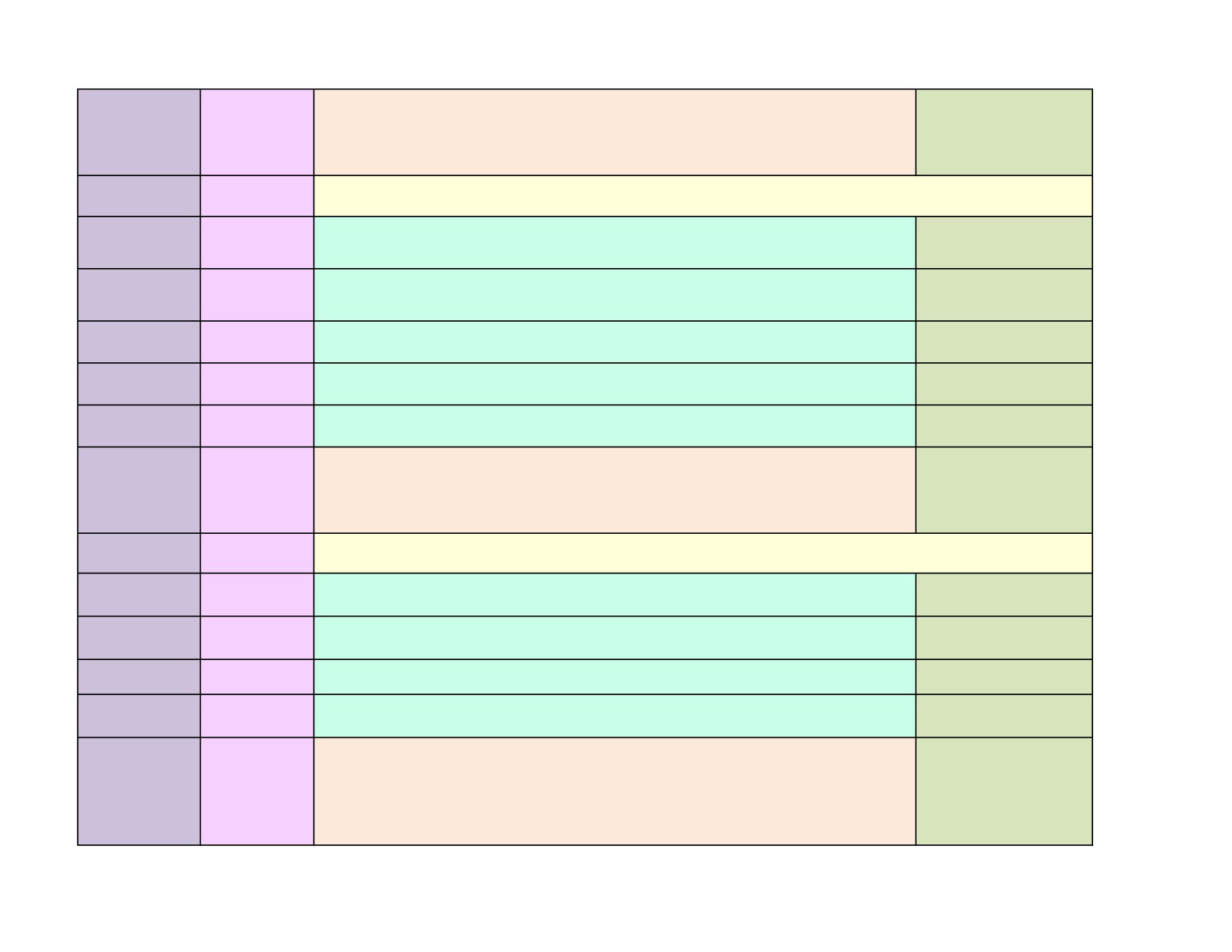Annapoorana Medical College & Hospitals, Salem
Department of Chest & TB
Phase III Part I Lesson Plan
Lecture
Competensy
Teaching learning
Topic
Number
Number
methodology
1
Topic: ANTI-TB drugs and regimen chemoprophylaxis Resistant TB
Describe and discuss the pharmacology of various anti-tuberculous agents, the
Lecture / Small Group
CT 1.14
indications, contraindications, and adverse reactions
Discussion
Objectives
1. Pharmacology of Anti-TB drugs
2. Indiation & Contraindications
3. Interactions & Adverse reaction
Prescribe an appropriate antituberculosis regimen based on the location of disease,
Bedside clinics, / Small
CT 1.15
smear positivity and negativity and co-mobidities based on current national guidelines
Group Discussion /
including directly observed tuberlosis therapy DOTS)
Lecture
Objectives
1. Anti TB regimen based on current National guidelines including DOTS.
Describe the appropriate precautions, screening, testing and indications for
Lecture / Small Group
CT 1.16
chemoprophylaxis for contacts and exposed health care workers
Discussion
Objectives
1. Indications for chemophylexi for contact health
Define criteria for the cure of Tuberculosis; describe and recognise the features of
Lecture / Small Group
CT 1.17
drug resistant ruberculosis, prevention and therapeutic regimens
Discussion
Objectivesc
1. Drug Ressitance Tuberculosis - Prevention & Treatment
2
Topic: Education of Health Care workers & Educaiton to Patient & Family
Communicate with patients and family in an empathetic manner about the diagnosis,
CT 1.18
DOAP Session
therapy
Objectives
1. Communication to patients & family
3
Topic :Obstructive Airway Disease Basie, Hypoxia, Hypercapnia
CT 2.1
Define and classify obstructive airway disease
Describeand discuss the epidemiology, risk factors and evolution of obscructive
CT 2.2
airway disease
Enumerate and describe has causes of acute episodes in patients with obstructive
CT 2.3
airway disease
Describe and discuss the Physiology and pathophysiology of hypoxia and
CT 2.4
hypercapneia
Describe and discuss the genetics of alpha 1 antitrypsin deficiency in emphysema
Objective:
1. Epidemiology, risk rfactors, evolution of Obstructive Airway Disease.
2. Cause of acute episodes of obstructive Airway
4
Topic: Role of Environment in OAD
Describe the role of the environment in the cause and exacerbation of obstructive
Lecture / Small Group
CT 2.6
airway disease.
Discussion
Describe and discuss allergic and non-allergic precipitants of obstructive airway
Lecture / Small Group
CT 2.7
disease.
Discussion
Elicit document and present a medical history that will differentiate the aetiologies of
Bedside clinics, /DOAP
CT 2.8
obstructive airway disease severity and precipitants.
Session
Objective:
1. Role of environment in the cause and exacerbation of obstructive Airway Disease.
2. Allergic and non allergic precipitants of Obstructive Airway Disease
3. Aetiology of Obstructive Airway Disease.
5
Topic: Systemic Examination of Respiratory System & Differential Diagnosis
Perform a systematic examination that establishes the diagnosis and severity that
includes measurement of respiratory rate, level of respiratory distress, effort tolerance,
Bes Side Clinic, DOAL
CT 2.9
breath sounds, addes sounds, identification of signs of consolidation pleural effusion
Session
and pneumothorax
Generate a differential diagnosis and prioritise based on clinical features that suggest
Bes Side Clinic, DOAL
CT 2.10
a specific aetiology
Session
Objective:
1. Systemic examination including respiratory rate, distress, breath sounds and added
sounds.
2. Identificaiton of signs of consolidation & pleural effusion & Pneumothorax.
3. Generate a differential diagnosis based on clinical features.
6
Topic: Pulmonary Function Test
Bed Side Clinic, DOAP
CT 2.11
Describe, discuss and interpret pulmonary function test
Session
Bed Side Clinic, DOAP
CT 2.12
Perform and interpret peak expiratory flow reate
Session
Objective:
1. Interpret pulmonary funciton test
2. Perform and interpret peak expiratory flow rate.
7
Topic: Diagnostic work up & Interpretation of Lab Results & Chest
Bes side Clinic,Small
CT 2.13
Describe the appropriate diagnostic work up based on
group Discussion,
DOAP Session
Bes side Clinic,Small
Enumerate the indications for and interpret the results of: pulse oximetry, ABG, Chest
CT 2.14
group Discussion,
Radiograph
DOAP Session
Generate differential diagnosis and prioritise based on clinical features that suggest a
CT 2.15
specific aetiology
Objective:
1. ppropriate diagnostic work up based on aetiology
2. Interpretation of results of pulse oximetry ABG
8
Topic: Therapeutic Plan for OAD
Discuss and describe therapies for Obstructive
Lecture / Small Group
CT 2.16
Airway Disease including bronchodilators, leukotriene inhibitors, mase cell
Discussion
stabilisers, theophylline, inhaled and systemic steroids, oxygen and immunotherapy
Lecture / Small Group
CT 2.17
Describe and discuss the indications for vaccinations
Discussion
Bes side Clinic,Small
CT 2.18
Develop a therapeutic plan including use of bronchodilators
group Discussion,
DOAP Session
Objective
1. Therapies for Obstructive Airway Disease
2. Indication for Vaccination in Obstructive Airway Disease.
3. Therapeutic paln including use of broncodilators
9
Topic: Management of Acute Exacerbation
Bes side Clinic,Small
Develop a management plan for acute exacerbations including bronchodilators,
CT 2.19
group Discussion,
systemic steroids, antimicrobial therapy
DOAP Session
Describe and discuss the principles and use of oxygen therapy in the hospital and at
CT 2.20
Small Group Discussion
home.
Objective:
1. Management plan for acute exarcerbations
2. Principle of Oxygen therapy
10
Topic: Counselling on smokers cessation & Cessation & Communication to Patients
Describe discuss and counsel patients appropriately on smoking cessation smoking
CT 2.21
cessation
CT 2.22
Demonstrate and counsel patient on the correct use of inhalers
DOAP Session
CT 2.23
Communicate diagnosis treatment plan and subsequent follow up plan to patients
DOAP Session
Objective:
1. Counselling on smoking cessation
2. Communication to patients on diagnosis, treatment & follow up
11
Topic: Impact of OAD on Society
Recognise the impact of Obstructive Airway Disease on patient's quality of life, well
Small Group Discussion
CT 2.24
being, work and family
/ Bedside Clinics
Discuss and describe the impact of Obstructive Airway Disease on the society and
Lecture / Small Group
CT 2.25
workplace
Discussion
Objectives:
1. Recognise the impact of Obstructive Airway Disease on Patients and their family's
quality of life.
2. Impact of Obstructive Airway Disease on society
12
Topic: Preventive measures to Reduce OAD
Discuss and describe prventive measures to reduce Obstructive Airway Disease in
Lecture / Small Group
CT 2.26
workplaces
Discussion
Demonstrate an understanding of patient's inability to change working, living and
Small Gropu
CT 2.27
Discussion, Bedside
environental factors that influence progression of airway disesae
Clinics
Demonstrate an understanding for the difficulties faced by patients during smoking
Small Gropu
CT 2.28
Discussion, Bedside
cessation
Clinics
1. Preventive measures to reduce Obstructive Airway Disease in workplace
Small Group
2. Understanding of patients inability to change working, living and environmental
Discussion, Bedside
factors.
Clinics
3. Understanding the difficulties faced by patient
13
Topic: Spirometry (Physiology)
PY 6.8
Demonstrate the correct technique to perform & Interior
DOAP Sessions
Objective:
1. To perform and interpret Spirometry
14
Topic: Drugs in Bronchial Asthma & Couch
Describe the mechanism/s of action, types, doses, sde effects, indications and
PH 1.32
contraindicaitons of drugs used in bronchial asthma and COPD
Describe the mechanism of action, types, doses, side effects, indications and
Lecture / Small Group
PH 1.33
contraindications of the drugs used in cough (antitussives, expectorants/mucolytics)
Discussion
Objective:
1. To know the drugs used in Bronchial Asthma and COPD
2. Drugs used in COUGH (Antitussives expectorants
15
Topic : First line Anti TB Drugs & MDR & XDR
Desribe the first line antitubercular drugs, their mechanisms of action, side effected
PH 1.44
Lecture
and doses.
PH 1.45
Describe the drugs used in MDR and XDR Tuberculosis
Lecture
Objective:
1. First line anti TB drugs
2. Multi Drug Resistant TB and Extremely Drug resistant TB - Treatment
16
Topic: C.O.P.D in Elderly
Describe and discuss the eatiopathogenesis, clinical presentation, identification,
IM 24.10
functional changes, acute care, stabilization, management and rehabilittion of COPD
Small Gropu Discussion
in the elderly
Objective:
1. Aetiopathogenesis, clinical presentation, management and rehabilitation of COPD
in the elders
17
Topic: Asthma in Children (Paediatrics)
Bedside clinics / Small
Describe the etio-pathogenesis, clinical features, diagnosis, management and
PE 28.19
Group Discussion /
prevention of asthma in children
Lecture
Objective:
1. Aetiopathogenesis, clinical features. Diagnosis and treating Asthma in children
Use of inhaler in children.
18
Topic: Tuberculosis in Children and Adolescent
Discuss the epidemiology, clinical features, clinical types, complications of
Lecture / Small Group
PE 34.1
Tuberculosis in Children and Adolescents
Discussion
Lecture / Small Group
PE 34.2
Discuss the various diagnostic tools for childhood tuberculosis
Discussion
Discuss the various regimens for management of Tuberculosis ad per National
Lecture / Small Group
PE 34.3
Guidelines
Discussion
Objectives:
1. Clinical Features, types & compliations & Diagnosis of TB in Children and
Adolescents.
2. Management of Tuberculosis as per National guidelines.
19
Topic: Preventive Aspect under National Guidelines & Interpretation of BCG
Discuss the preventive strategies adopted and the objectives and outcome of the
Lecture / Small Group
PE 34.4
National Tuberculosis Control Program
Discussion
Able to elicit, document and present history of contact with tuberculosis in every
Bedside clinics, Skill
PE 34.5
patient encounter
lab
Bedside clinics, Skill
PE 34.6
Identify a BCG scar
lab
Bedside clinics, Skill
PE 34.7
Interpreta Mantoux test
lab
Bedside clinics, Skill
PE 34.8
Interpret a Chest Radiograph
lab
Objectives:
1. Preventive strategies, elicit history of contact with tuberculosis
2.Interpret BCG Scar, Mantoux Test
3. Interpret Chest Radisgraph
20
Topic: Interpretation of Blood test and Culture test in TB & AFB staining
Bed side Clinic/ Small
PE 34.9
Interpretblood tests in the context of laboratory evidence for tuberculosis
Group Discussion
Discuss the various samples for demonstraing the organism eg Gastric Aspirate,
Bed side Clinic/ Small
PE 34.10
Sputum, CSF, FNAC
Group Discussion
PE 34.11
Perform AFB staining
DOAP session
Enumerate the indications and discuss the limitations of methods of culturing
PE 34.12
Small Group Discussion
M.Tuberculii
Objective:
1. Interpret Blood testes for Tuberculosis
2. Discuss the samples for demonstrating Mycobacterium Tuberculosis
3. Perform AFB staning
4. Discuss the indications and limitations of culturing






